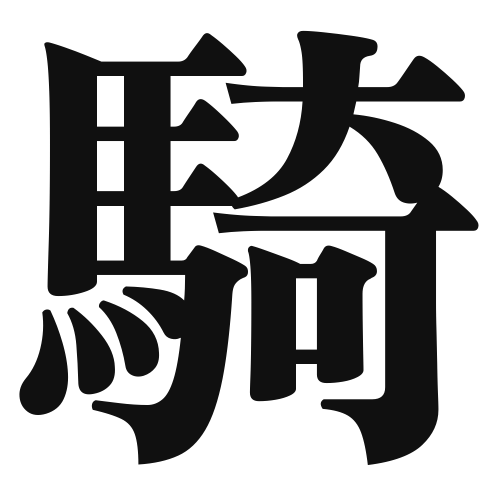1. Overview of Meaning
The kanji “騎” (ki) primarily means “to ride” or “to mount,” especially in the context of riding horses or other animals. It conveys the action of being on top of something while in motion.
2. Formation and Radical
Formation of the Kanji: The kanji “騎” is a phonetic-ideographic character (形声文字). It combines the radical for “horse” (馬) on the left, indicating its relation to riding, with the phonetic component “gi” (奇) on the right, which contributes to its pronunciation.
Radical: The radical of “騎” is 馬 (uma), which means “horse.” This radical is commonly found in kanji related to horses and riding.
3. Examples of Usage
Common Words and Phrases: Some frequently used words that include “騎” are:
- 騎士 (きし, kishi) – knight
- 騎馬 (きば, kiba) – cavalry
- 騎乗 (きじょう, kijou) – riding (a horse)
Example Sentences in Daily Conversation:
- 彼は毎週末、馬に騎乗します。
(He rides a horse every weekend.) - 騎士の物語はとても面白いです。
(The stories of knights are very interesting.)
4. Synonyms and Antonyms
Similar Kanji: A similar kanji is “乗” (じょう, jou), which also means “to ride” but is more general and can refer to riding in vehicles as well.
Antonyms: An antonym for “騎” could be “降” (こう, kou), which means “to descend” or “to get off,” indicating the opposite action of riding.
5. Cultural and Historical Background
Relation to Japanese Culture: The concept of riding, especially on horses, has deep roots in Japanese history, particularly in the context of samurai culture and warfare.
Proverbs and Idioms: One relevant proverb is “馬の耳に念仏” (uma no mimi ni nenbutsu), which translates to “a sutra in a horse’s ear,” meaning that advice or words of wisdom are wasted on someone who does not listen.
